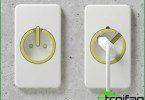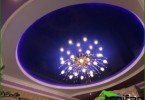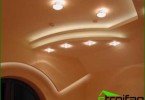How to arrange solar-powered street lighting
Do you often go to bed at sunset? Stupid question, right? Especially in winter, when it gets dark before the end of the working day, and after all, after it we still have so many things that need to be redone and must be done today. In cities it’s easier – the bright illumination on the streets gives us the opportunity to meet with friends, go shopping and just walk before bedtime. And in the so-called private sector? There are few street lamps and they illuminate mainly the center. The outskirts are most often decorated with one or two lights. So owners of private houses have to take care of a bright life on their own. And more and more hosts are installing solar-powered street lighting. And what? It’s light and you don’t have to pay for electricity.
Content
- Street lighting of a country house
- A selection of solar-powered luminaires
- What is a solar lamp
- Comprehensive Benefits List
- Rules for installation and operation
Street lighting of a country house
Any owner of his own house is well aware that the arrangement of the territory of the economy and the surrounding area (access to the site) will have to do it yourself. The state is not going to shoulder these responsibilities – you need it, you do it. But such independence gives us many opportunities to do everything the way we want. True, when using standard electric lamps working from a common network, one has to make a lot of “extra” body movements associated with the implementation of national standards and the approval of government agencies. A completely different situation, saving us from such an overuse of energy and nerves, is obtained if we arrange the lighting with the help of autonomous solar-powered lamps.
No matter how big (or small) our site is, there are always places in it that need lighting. What is most often equipped with light sources?
- porch (front door)
- gate
- walkway to home
- household buildings
To many, a pair of dim shades above the door to the house or barn replaces all possible illumination. So what if you have to stumble in the dark before the shed with the cellar? There are a couple of steps in all, endure, but we will not pay too much for electricity! Familiar?
And now let’s see what can be done, having at its disposal lamps independent of the mains:
- arrange decorative and functional illumination of the house and any utility structures
- illuminate all the paths on the site (both to the outbuildings and in the garden)
- to decorate landscape scenery (alpine hills, fountains, lawns, flower beds, arbors)
- organize bright lighting of access roads to the site and the house
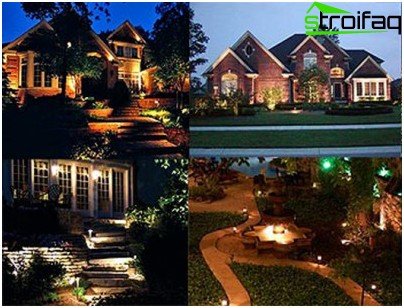
Options for Using Solar Lamps for Street Lighting
How do you like it? Like? Then determine what exactly you want to highlight with backlight, and proceed to the selection of suitable lighting fixtures.
A selection of solar-powered luminaires
We are fortunate that scientific and technological progress is now moving towards improving our lives. That is, many discoveries are aimed not at the sphere of armaments (in any case, not only at it), but towards domestic improvements. And the results of those studies that were previously intended for some military space purposes are now being used in our peaceful, comfortable life. One of such inventions was solar panels. They have come a long way from super-expensive spacecraft devices to the modern version..
So what do solar-powered lamp manufacturers offer us? There are several classifications of such lampions with respect to various characteristics. But for us now, the most suitable is the separation of street lamps by the method of their installation:
- flashlights on short legs, the light source of which is located almost near the ground (installed mainly next to the tracks on the site)
- lanterns on columns of various lengths illuminating a fairly large space around (it is convenient to illuminate access roads with such lanterns or install them near the porch)
- pendant lights suspended on tree branches or a taut rope (hang over flower beds or next to the gazebo)
- facade and recessed fixtures (mounted directly on the wall of the house – either as illumination of decorative details, or as bright spotlights aimed at the desired areas around the house)
- decorative lamps (well, everything is clear here – you can decorate both the landscape features of the site and the house itself)
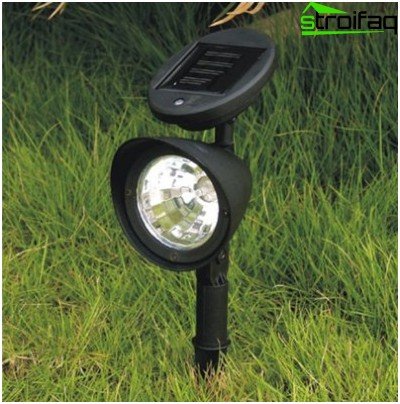
A short spotlight floodlight is installed along the paths along the path of the lawns
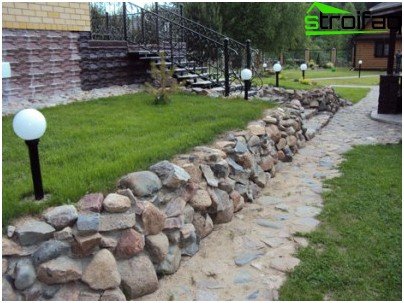
Solar-powered flashlights used to light paths – the most economical way to organize private lighting
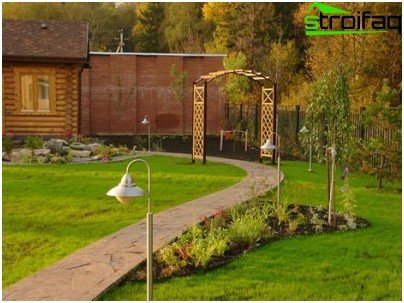
Solar high lights: a huge amount of design solutions
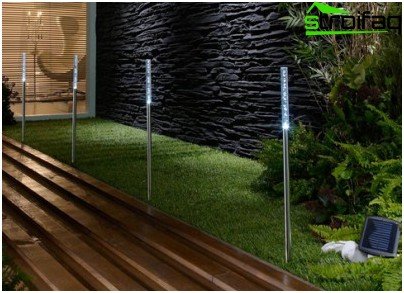
Solar decorative lights – stylish appliances fit perfectly into any landscape
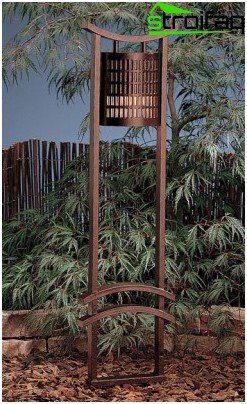
Japanese-style Solar High Lantern
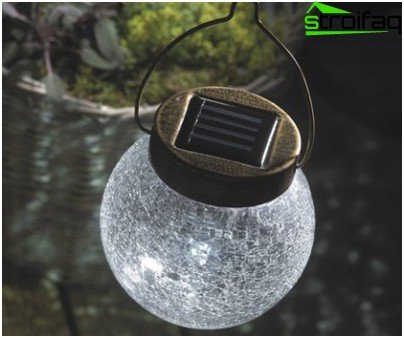
A simple pendant solar flashlight is just as easy to use
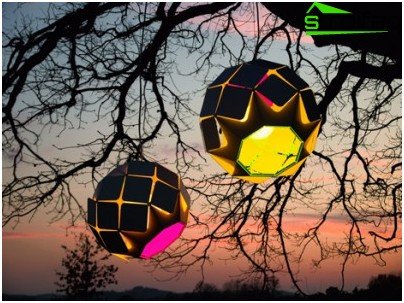
Suspended solar lanterns for the garden create an extraordinary surroundings
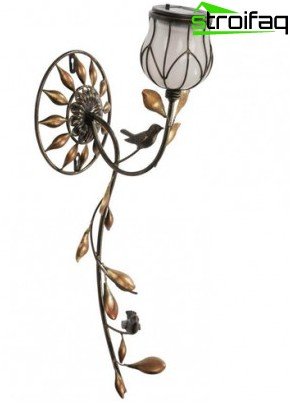
The wall solar lamp sconce will decorate not only the site, but the house itself
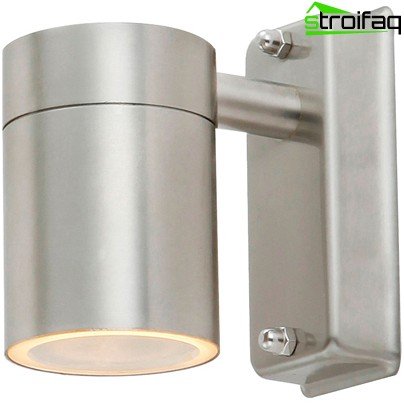
The wall solar lamp illuminates a certain zone, a decor element, an object
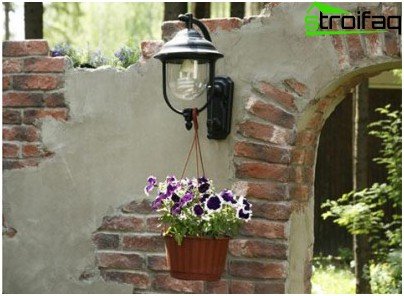
Wall-mounted solar flashlight, simultaneously performing the function of supporting fixture for a kind of flowerbed

Solar Powered Decorative Garden Lamp
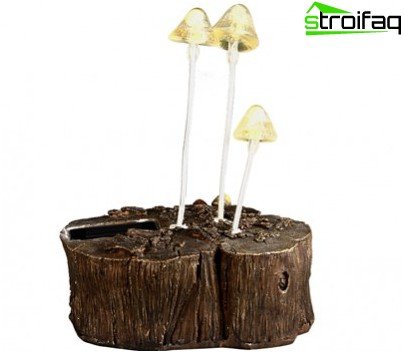
The decorative solar lamp for the garden attracts with its non-standard design and environmental priorities

Decorative solar lantern with a dog figurine

A decorative solar lamp for decorating the garden, like any solar lighting device, requires only regular wiping from the owners
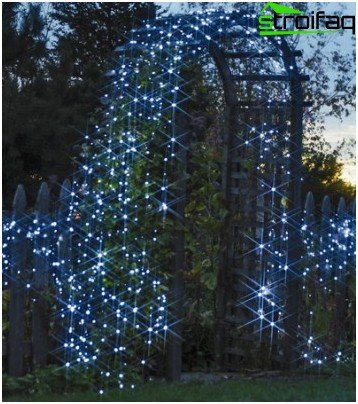
Decorative Solar Garland
In any of these types of lighting devices, LEDs of various brightness can be used. Indeed, for purely decorative purposes, a mysterious multi-colored flicker is more suitable, and if the functionality of such flashlights is lighting, then it is better to choose a more powerful lamp. So decide what you need, browse the catalogs, and buy your favorite options. Just be sure to try to match your choice with the basic design of the house and the plot, because the main feature of the spectacular design is its harmony.
What is a solar lamp
Despite the diverse design of solar lamps, they are all arranged more or less standardly and consist of the following components:
- lighting unit (LED lamp in the housing)
- solar battery (photovoltaic module that converts solar energy into electrical energy)
- battery (for the smallest models – a simple rechargeable battery)
- controller (automatically turns on and off the lighting, at the same time optimizes the battery)
- support (column, leg, pendant, decorative body)
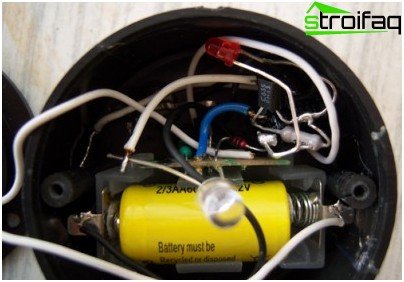
This is what a solar-powered lamp looks like inside
It would seem that nowhere is easier. However, they achieved this ingenious simplicity for many years. Recall that the use of the predecessors of the modern solar battery began in the seventies of the last century. Moreover, these batteries were very expensive and with a small efficiency. What has changed now? Finally learned:
- make photovoltaic modules compact and with an efficiency of at least twice the level of space analogues of the last century
- make capacious small batteries
- use LEDs as lamps
All this made it possible to get inexpensive household solar-powered lamps. And the design of flashlights so different in size, installation methods and operational functions has been left to the artists and designers who, since the first home and street light sources (such as torches, candles and oil lamps) have been striving to give them elegance, beauty and originality. So we can now choose for ourselves a solar lamp, the most appropriate to our tastes and preferences.
By the way, choosing a lamp, do not forget to ask about its technical characteristics. In order for you to understand what is at stake, we provide some data on the maximum service life of components:
- LED – up to 100 thousand hours (given that such a LED works for 8-10 hours per day, this has been achieved for more than 27 years)
- solar battery – up to 25 years
- battery – up to 15 years
It is clear that for a high-quality device with a long service life, you need to pay in high quality. But here it is not necessary to buy the most reliable systems. For arranging street lighting in a suburban area, the general “shelf life” of the flashlight is about 5-10 years, and during this time even more reliable and miniature samples will appear.
Comprehensive Benefits List
Due to the simplicity of design and reliability of components, solar lamps have a good set of advantages. These include:
- affordable rates
- saving on electricity
- ease of installation (mounted independently, without the help of specialists)
- the ability to install anywhere, even hard to reach
- long service life
- ease of operation (turn on and off automatically)
- a wide variety of designs (can be used for decorative purposes)
- environmental friendliness (do not harm the environment even when disposed of)
- safety (works at low currents)
And practically the only drawback of such flashlights – susceptibility to pollution – is easily solved by periodic cleaning.
Rules for installation and operation
There are few such rules, only two.
It is necessary to install lamps so that in the afternoon sunlight would get on their photocells as much as possible.
The battery itself needs to be cleaned from dust and dirt from time to time so that it works at full capacity..
That’s all – a bright life is provided for you. Successful achievements in the field of light design!


